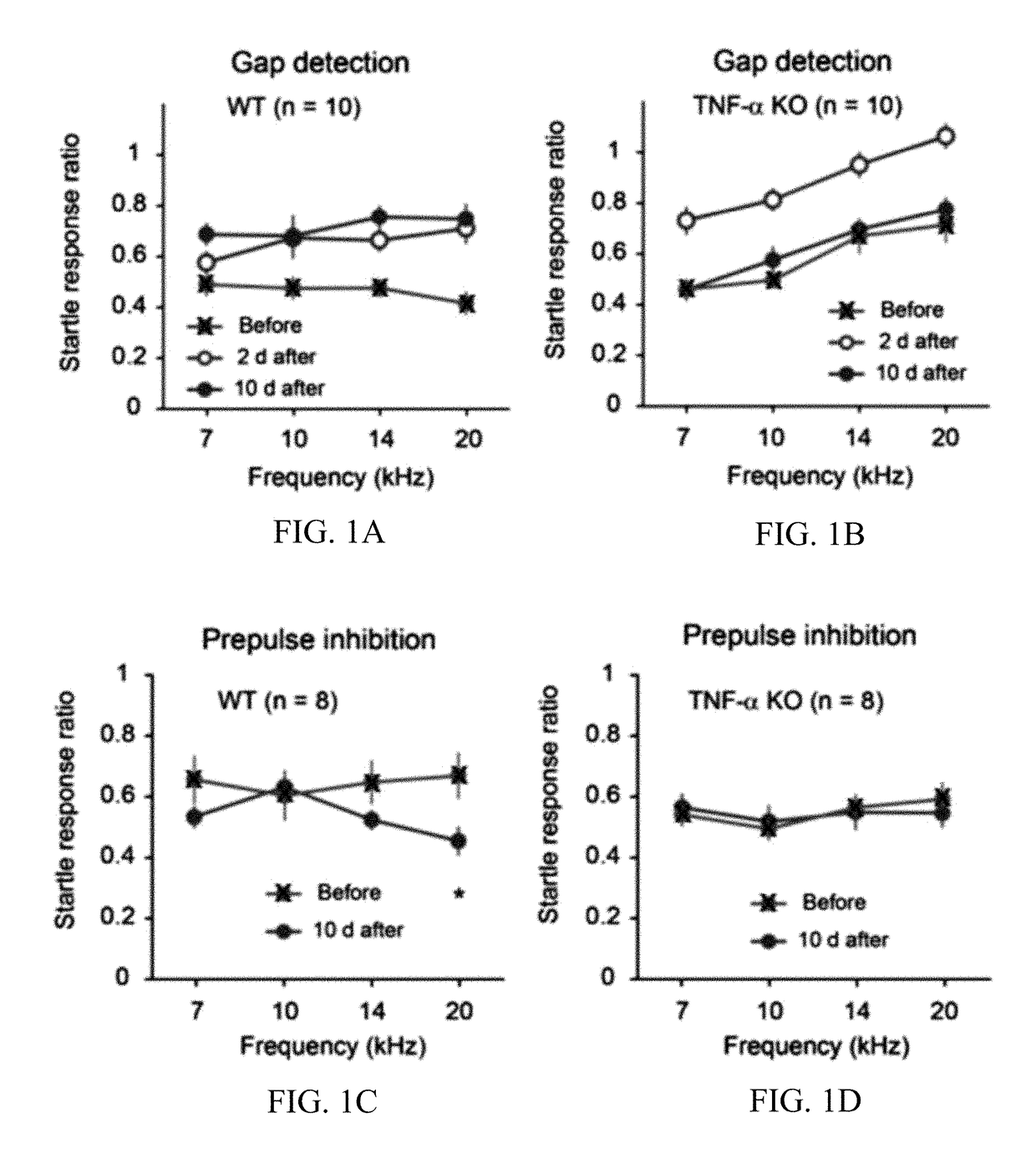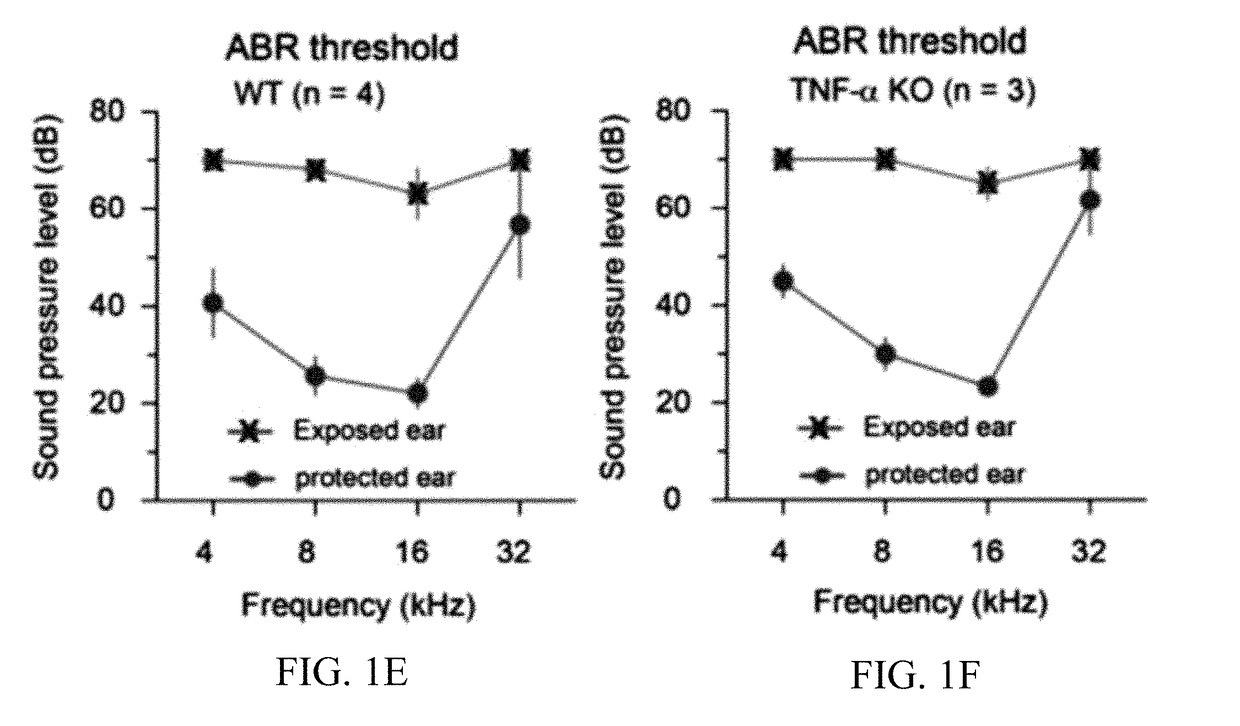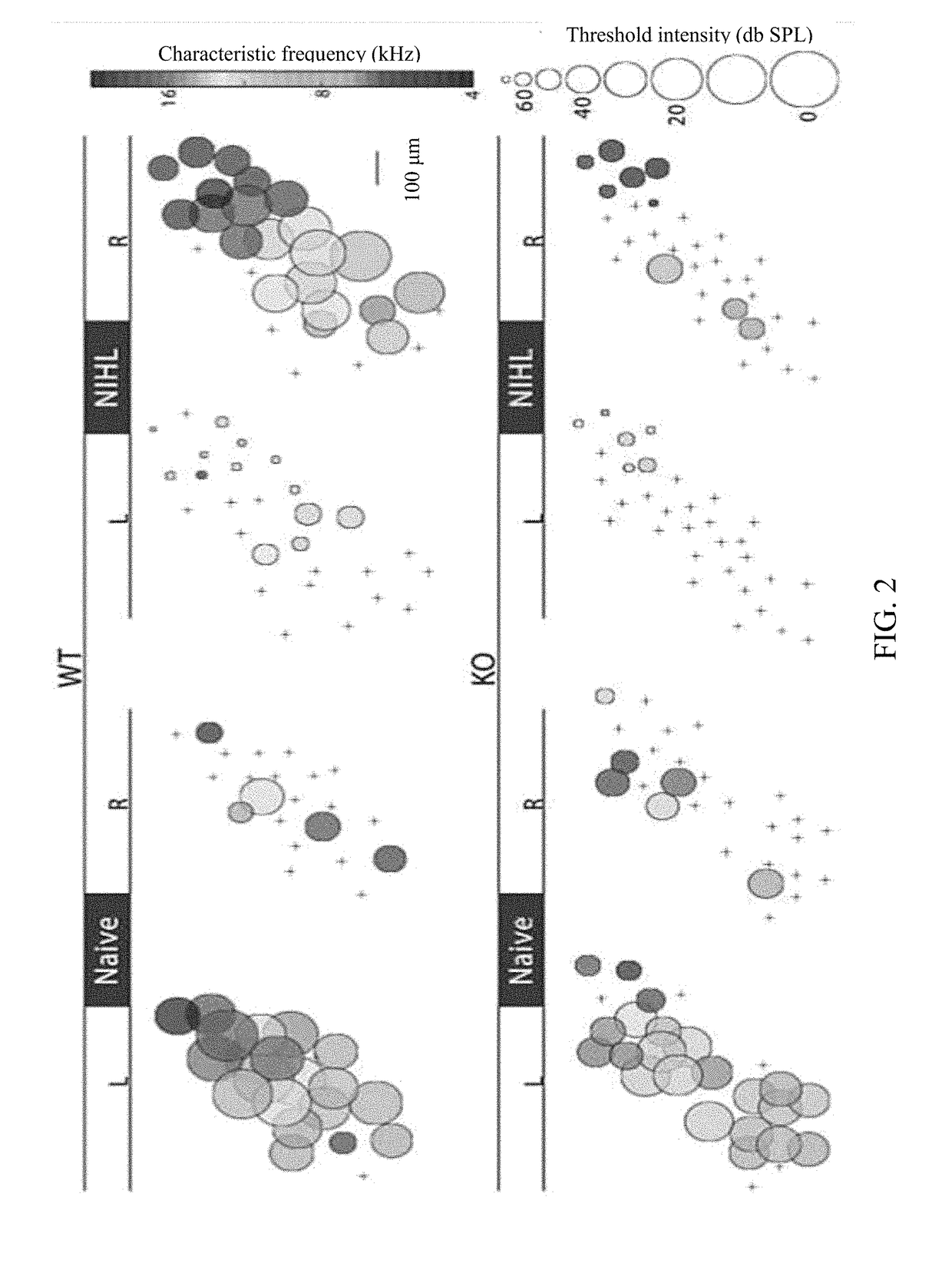Methods of treating hearing disorders
a tumor necrosis factor and hearing technology, applied in the direction of peptide/protein ingredients, organic active ingredients, pharmaceutical active ingredients, etc., can solve the problems of untreated hearing, reduced job performance, reduced earning power, etc., to reduce inhibition, reduce neural sensitivity, and reduce the effect of central gain
- Summary
- Abstract
- Description
- Claims
- Application Information
AI Technical Summary
Benefits of technology
Problems solved by technology
Method used
Image
Examples
example 1
es Tinnitus in WT but not TNF-α KO Mice
[0209]The left ear of anesthetized WT and KO mice were exposed to a 112-dB 8-kHz tone for 2 hours while the right ears of the mice were protected with sound attenuating clay. Behavioral evidence of NIHL-induced tinnitus was assessed by comparing gap detection performances before and after NIHL. Gap detection was impaired in both WT and KO mice 2 days after the sound exposure (FIGS. 1A-1B). However, by 10 days after sound exposure, gap detection performance of the KO mice had improved to the pre-exposure level (FIG. 1B). By contrast, gap detection performance of the WT mice remained impaired (FIG. 1A). A genotype-by-session 2-way ANOVA revealed significant effects for genotypes (F1,234=15.37, p2,216=40.76, p2,216=17.96, p<0.0001), indicating that the effect of sound exposure on gap detection performance was different between WT and KO mice.
[0210]FIGS. 1A-1B demonstrate that TNF-α knockout mice do not develop chronic tinnitus following NIHL as se...
example 2
Plasticity Following Unilateral Hearing Loss is Impaired in TNF-α KO Mice
[0212]FIG. 2 provides example contralateral (L) and ipsilateral (R) maps for WT and KO in naïve and NIHL animals demonstrating that contralateral responses are nearly eliminated following NIHL in WT and KO, however only WT animals show strong augmentation of the ipsilateral map. Each circle represents the multi-unit recording from one site, with characteristic frequency and threshold intensity represented by color and radius, respectively. Unresponsive sites are marked by a +. In naïve WT and KO animals, contralateral maps in naïve animals have low thresholds and few non-responsive sites, while ipsilateral maps have few responsive sites. Contralateral responses are nearly eliminated following NIHL in WT and KO, however only WT animals show strong augmentation of the ipsilateral map.
[0213]FIGS. 3A-3C demonstrate the absence of ipsilateral response development in KO post-NIHL. FIG. 3A shows the proportion of anal...
example 3
Infusion of Recombinant TNF-α Results in Tinnitus
[0216]To test whether TNF-α is sufficient to cause tinnitus symptoms, mouse recombinant TNF-α was infused into the right hemisphere auditory cortex of normal-hearing WT and TNF-α KO mice. Control WT and KO mice were infused with carrier solution containing artificial cerebrospinal fluid and mouse albumin. Gap detection and PPI performance was examined in three daily sessions prior to the injection and only the third session was used as the baseline performance. Mice were tested again after 3 days of post-surgical recovery. Gap detection performance was analyzed with a 4-way ANOVA on genotype (WT vs. KO), treatment (before vs. after infusion), drug (TNF-α vs. albumin) and frequency of the background tone. There were main effects of treatment (F1,152=8.619, p=0.0038) and drug (F1,152=4.476, p=0.032). There was also treatment×drug interaction (F1,152=5.730, p=0.018), indicating that TNF-α and albumin changed gap detection performance dif...
PUM
| Property | Measurement | Unit |
|---|---|---|
| frequency | aaaaa | aaaaa |
| frequency | aaaaa | aaaaa |
| frequency | aaaaa | aaaaa |
Abstract
Description
Claims
Application Information
 Login to View More
Login to View More - R&D
- Intellectual Property
- Life Sciences
- Materials
- Tech Scout
- Unparalleled Data Quality
- Higher Quality Content
- 60% Fewer Hallucinations
Browse by: Latest US Patents, China's latest patents, Technical Efficacy Thesaurus, Application Domain, Technology Topic, Popular Technical Reports.
© 2025 PatSnap. All rights reserved.Legal|Privacy policy|Modern Slavery Act Transparency Statement|Sitemap|About US| Contact US: help@patsnap.com



